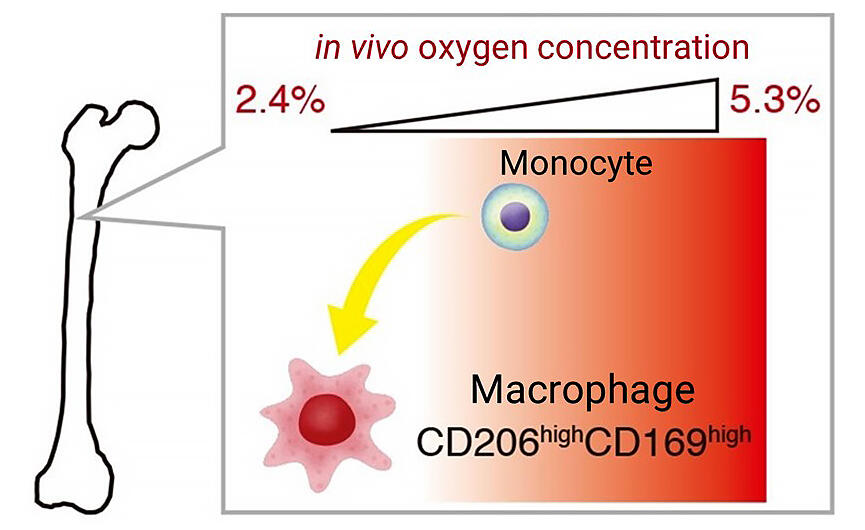A research group led by Professor Keizo Nishikawa of the Graduate School of Life and Medical Sciences, Doshisha University, Professor Masaru Ishii of Graduate School of Frontier Biosciences, Osaka University, and Professor Yasuo Mori of the Graduate School of Engineering, Kyoto University, has developed a technology to simultaneously analyze monocyte cells and oxygen by observing the inside of the bone marrow of a living animal using a two-photon excitation microscope that can observe the depths of living tissue. By observing this bone marrow, they succeeded in obtaining information on the oxygen concentration of the bone marrow at the cellular level. Their findings were published in Scientific Reports.

Provided by Doshisha University with modifications by JST
By using a chemical probe that sees oxygen and a two-photon excitation microscopy technique for live imaging of bone marrow, the research group was able to measure the oxygen concentration to which monocyte cells inside living mouse bone marrow are exposed. They found that the oxygen concentration of monocyte cells in living bone marrow was maintained at 2.4% to 5.3%. This is the world's first research to have successfully obtained information on oxygen concentration in bone marrow cells at the single-cell level. They examined the effect of hypoxia on monocytic cell differentiation within this physiological oxygen concentration range and found that hypoxia induces a specialized macrophage population that highly expresses the cell surface proteins CD206 and CD169.
Cell biological techniques using cultured cells have become an indispensable empirical tool in life science research. However, most culture experiments are conducted under atmospheric pressure with an oxygen concentration of about 21%, which is much higher than in vivo and constitutes a hyperoxic condition. It has been pointed out that this hyperoxic condition produces a non-physiological cellular response that is far removed from that of in vivo because it produces an amount of reactive oxygen species that is not possible in a cell.
Oxygen can be toxic to cells at concentrations that are too low or too high. The precise information on oxygen concentrations revealed in this study is important not only for the study of hypoxic responses, but also for bringing conventional cell biology research closer to in vivo conditions. The accurate source of information on biomolecular abundance in living animals is expected to contribute to medical research to reveal the mechanisms of disruption of biological homeostasis and the onset of disease in the future.
This article has been translated by JST with permission from The Science News Ltd.(https://sci-news.co.jp/). Unauthorized reproduction of the article and photographs is prohibited.




